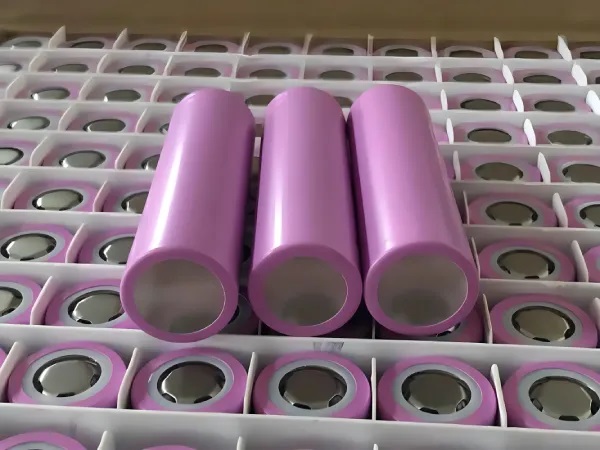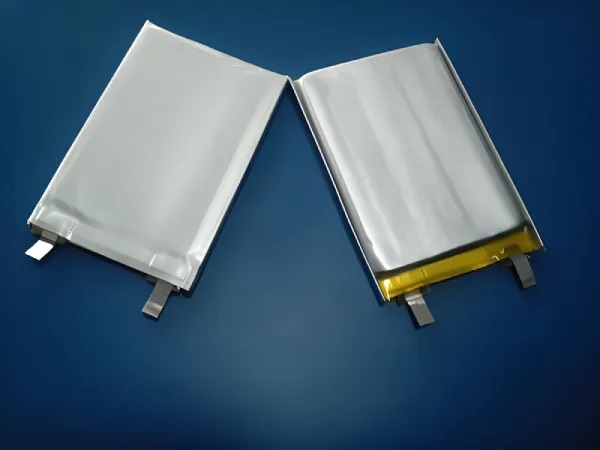Lithium battery cells are divided into two types: liquid lithium-ion cells and polymer cells. As for which of the two battery cells is more stable, it cannot be generalized. It mainly depends on the technical level of the battery manufacturer.
Generally speaking, there are two types of battery cells in the power bank market. One is the 18650 battery cell. The other is lithium polymer battery cell. These two types of cells dominate the vast majority of the market in the lithium battery industry.
Part 1. 18650 battery cell

18650 is a standard lithium-ion battery model set by the Japanese SONY company in order to save costs. Among them, 18 means a diameter of 18mm, 65 means a length of 65mm, and 0 means a cylindrical battery. Common 18650 batteries are divided into lithium-ion batteries and lithium iron phosphate batteries.
1. 18650 battery cell capacity
18650 battery cells generally have 2200mAh, 2400mAh, and 2600mAh capacity standards. According to industry insiders, the current 18650 battery cell has reached a maximum single cell capacity of 3400mAh. If the power bank uses 18650 battery cells as cells, the above specifications are basically connected in parallel.
2. Packaging of 18650 battery cells
18650 battery cells are divided into different systems of lithium iron phosphate, lithium cobalt oxide, lithium manganate, cobalt and manganese hybrid, and ternary materials. The casing of the 18650 battery is divided into two types: steel shell and polymer. Batteries with different material systems have different advantages. The structure of a typical cylindrical battery includes: shell, cap, positive electrode, negative electrode, separator, electrolyte, PTC component, gasket, safety valve, etc. Generally, the battery casing is the negative electrode of the battery, and the cap is the positive electrode of the battery. The battery casing is made of nickel-plated steel plate.
3. 18650 battery cell safety
Lithium-ion batteries are improved products of lithium batteries. After years of development, lithium-ion battery technology has become relatively mature. High-volume production has made its manufacturing costs very low. Therefore, lithium-ion batteries have more advantages in price than lithium polymer batteries. This is why most laptops and other devices currently use this kind of battery cell.
Nowadays, power banks most commonly use steel-cased 18650 battery cells, which have a high safety factor. Its production technology is very mature and its price is cheaper than polymer batteries, accounting for most of the lithium battery market share. 18650 battery cells are the most common in laptop batteries.
Part 2. Lithium polymer battery cell

Lithium polymer battery cell is generally made of a mixture of lithium cobalt oxide, lithium manganate, and ternary lithium. It is produced through a certain proportion of the three mixtures and a certain technological process. The outer packaging of lithium polymer batteries is mainly made of aluminum-plastic film, and the lithium substance in the middle is in the form of paste. So the shape can be customized at will. At the same time, ultra-thin batteries can be produced, such as 0.33mm and 0.50mm ultra-thin batteries.
Lithium polymer batteries are also a type of lithium-ion battery. However, compared with liquid lithium batteries (Li-ion), it has many obvious advantages such as high energy density, smaller size, ultra-thinness, lightweight, and high safety. It is a new type of battery.
In terms of shape, lithium polymer batteries are ultra-thin and can be made into batteries of any shape and capacity to meet the needs of various products. The minimum thickness that this type of battery can achieve is up to 0.5mm. Its nominal voltage is the same as Li-ion’s nominal voltage of 3.7V, and there is no memory effect.
1. Lithium polymer battery cell capacity
The capacity of lithium polymer battery cells is determined by the size of the volume. It is also related to the ratio of raw materials used.
Because lithium polymer batteries can be any size. It has no standard shape, and the general volume is expressed as length*width*thickness. In addition, lithium polymer battery cells also have a positive and negative tolerance, and the length and width adopt a positive tolerance of 0.5mm. The thickness adopts a negative tolerance of 0.55mm.
2. Lithium polymer battery cell safety
The polymer battery is covered with a layer of aluminum-plastic film and a layer of high-temperature tape. The potential safety hazard of lithium polymer battery cells is that they may leak and short-circuit, causing the package to expand. The worst case scenario is combustion and flames.
Therefore, compared with 18650 battery cells, lithium polymer battery cells are better in terms of safety. But burning can also create safety hazards.
Part 3. 18650 battery cell vs lithium polymer battery cell
Let me talk about the conclusion first. Relatively speaking, lithium polymer battery cells are safer than 18650 battery cells.
Many people have heard this statement: 18650 battery cells are in danger of exploding. The worst case scenario for a lithium polymer battery cell is to catch fire and not explode. Therefore, polymer batteries are safer than 18650 batteries.
In fact, this is true in theory, but in reality it is not the case. The 18650 battery cells are packed in steel shells and are not easily deformed. After long-term development, the technology is now very mature. For example, the 18650 batteries produced by international brands such as Panasonic, Sony, and Samsung have stable discharge performance and stable battery life, and are safe through excellent circuit design. The probability of explosion is very low.
Although polymer batteries are theoretically safer. However, because the lithium ions inside the lithium polymer battery cell are in the form of paste and the outside is encapsulated with aluminum-plastic film, the texture is soft, easy to deform, and not resistant to collisions. Therefore, the technical difficulty of production is high, and the production requirements for manufacturers are high.
Currently, except for Ufine Battery, there are only a few manufacturers in China that can produce high-quality lithium polymer battery cells. Moreover, the overvoltage protection adopted by different battery manufacturers varies greatly. Therefore, lithium polymer battery cells are not necessarily safer than 18650 battery cells.



